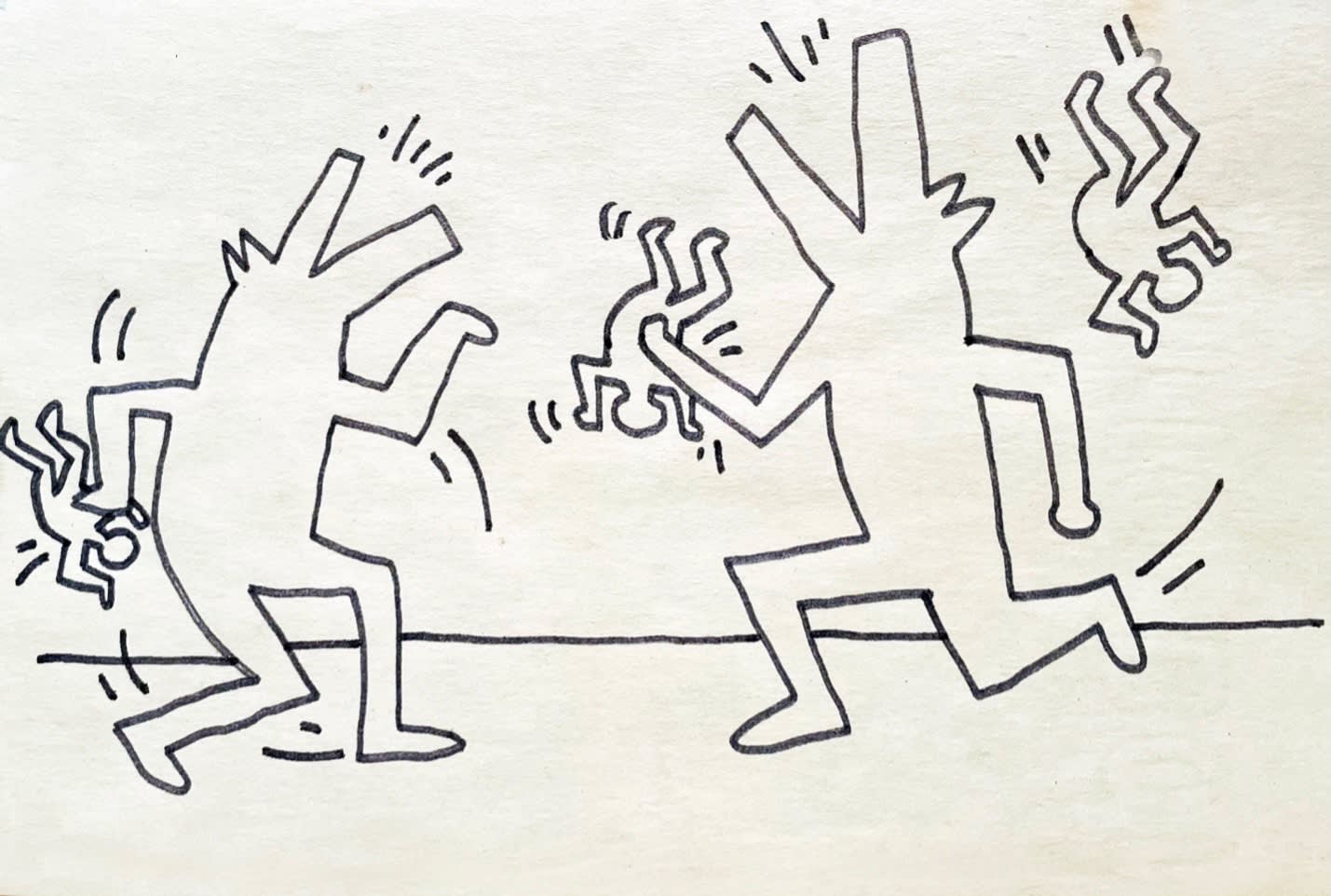Keith Haring American, 1958-1990
Keith Haring’s recognizable style is most associated with his public artworks, such as those he did in the varied subway stations of New York City in the 1980s. However, he was simultaneously developing his signature style via less public, smaller-scale drawings that he would sell through his retail shop in SoHo, which he referred to as his Pop Shop. He envisioned these smaller scale marker drawings to also reach a wide audience, just as the subway public artworks, by making them accessible to a general audience.
In her article, Keith Haring, Subway Drawings Amy Raffel explains this push for more inclusive forms of art in the New York art scene during the 1980s. She states, “Other artists of Haring’s generation worked within the public spaces of New York City to create and display art including Jean-Michel Basquiat, Kenny Scharf, Barbara Kruger, Jenny Holzer, and Richard Hambleton. In addition the artist collectives Colab, Fashion Moda, Gran Fury, and Group Material used the street as canvas. Like Haring, these artists experimented with alternate distribution systems to expand their reach outside of the commercial art world. Through posters, billboards, or small sculptures, or by engaging the community through artist-run events, pop-up exhibition spaces, or activist demonstrations, these downtown artists (like Haring) regularly put their art and ideas on the street to be enjoyed, and to inform and involve the public. Their intention was inclusion, rather than to alienate or confuse.”
Haring’s artistic language became widely recognizable, using pop-art aesthetics with flowing, bold lines. He focused on symbolism linked to spirituality, sexuality, human strife, rebirth and changing cultural norms.
Provenance
Keith Haring
Gift of the artist
Private collection 1982-2021
